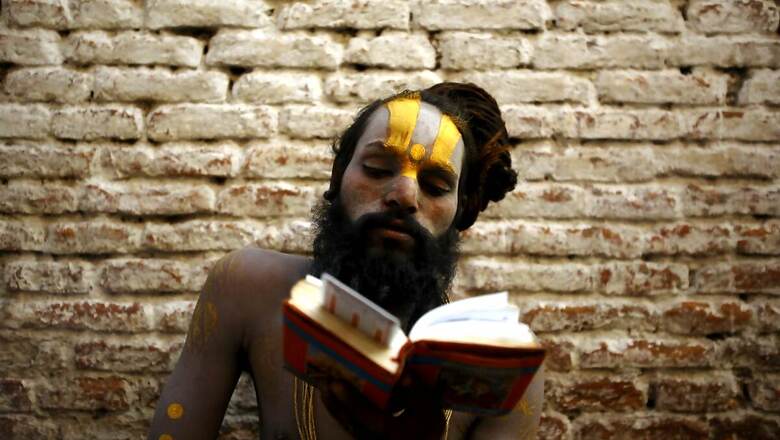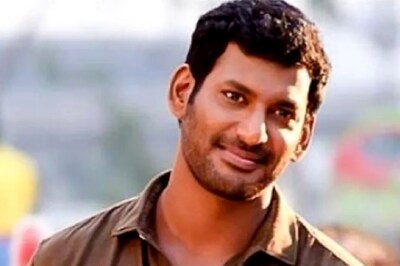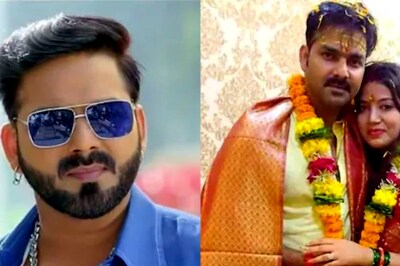Ravana’s Pious Wife, Physician Who Saved Lakshman: Big Contributions of Minor Characters in Ramayana

views
On August 9, a national daily in its supplement carried an article about the neglected characters in the Epic Ramayana. Four famous mythographers listed Urmila, Mandodari, Ahilya and Jabali as their picks for the less-talked about individuals who have eminent personage and significant contributions.
Predictably, perhaps, the first three were named by women authors and the last character — the solitary man on the list — was highlighted by the only ‘purush’ in the mythographer quartet selected by the diurnal.
The aforementioned women are indeed at the periphery of the main story of Rama but deserve epics of their own. Urmila was the younger sister of Sita and wife of Lakshman, who “slept” for 14 years as she waited for her husband to return from exile. The mythology is replete with metaphors for what is sleep but an exile from reality, whilst at the same place?
Then there is Mandodari, wife of Ravana, who has been extolled as a Panchakanya of the Hindu epics. She is described as a beautiful apsara with a fascinating life and a tale which deserves retelling. A righteous and pious woman, Mandodari stands by her husband, Ravana, despite her many disagreements with him on his choices and acts. Her repeated counsel to her valiant husband was unheard and she, the queen, saw the destruction of the fabled Kingdom of gold to ruins, helplessly. Manini J. Anandani’s book Mandodari – Queen of Lanka narrates in first person, through Mandodari’s perspectives, the tale of Lanka.
The story of the deliverance of Ahilya by Lord Ram seems primarily penned to depict his divinity. Though few modern authors have narrated the woman’s perspective, it certainly needs a deeper understanding and retelling. As per mythology, Ahilya, accused of adultery, and found in a compromising state by her husband Rishi Gautam, was accursed into a monolith. A young Rama accidentally touches the stone, which metamorphoses her back into human form. She is thus brought back to life through divine intervention. Obviously, turning into stone depicts the apoplexy that any shell-shocked victim of a gruelling circumstance may experience.
The society chose to believe the accuser, continued to despise her and refused to recognise or let alone acknowledge her. It takes the purity of sight and thoughts of the divine, through Lord Ram, to restore the fossilised Ahilya back into a pulsating being.
The character of Jabali, on the other hand, is perhaps little known unless a person is a serious scholar of the epic. Rishi Jabali, was a resident of Ayodhya, and a true patriot. At few instances in the literature he is depicted to be an alleged Charvaka by faith, but perhaps not a rabid atheist for he enjoyed the confidence of Emperor Dasharath to be appointed as a trusted advisor. Hindus are the dwellers of the land by the river Sindhu and beyond (as viewed from the heights of Hindukush range), known as Bharat since time in memorial and Hindustan by the medieval adventurers and conquerors.
They practiced a multifarious religious traditions and rituals and not bound by any rigid doctrines of faith, primarily following the Vedic philosophy, which is a flow of convictions with numerous tributaries and distributaries, permitting differences of opinion and traditions, through seamless amalgamation of ideas and yet allowing divergence of individual views.
Jabali tried to persuade Lord Rama to give up his exile, using rational arguments. He argued that Ram need not undertake the 14-year ordeal as his paternal promise predated his birth. Also, being the crown prince, the yuvraj’s duty towards his subjects should take precedence over any other, including those towards the family.
It is also documented that royal Guru Vashistha supported Jabali’s view.
For many of us, our initiation to mythology and certainly history had been through Amar Chitra Katha, India's illustrated stories about divinity, mortals and regals.
Anant Pai (Uncle Pai) of Indian Book House was apparently shocked to find the shallow knowledge of some quizzers on national television way back in February 1967.
The quizzers knew all about Greek mythology but could not answer the name of Lord Ram’s mother. Though this story/myth is strongly debated, nobody can question the fact that Pai’s contribution as an educator has exposed and enlightened millions of Indians to the country’s many tales and classics, perhaps significantly more successfully than the conventional school system. Notwithstanding the critique of racial, religious and Brahminical bigotry in his retelling, his contribution to inform the generation of Indians remains enormous. Through comic-formatted retellings of folklore, myths, historical trivia and fascinating story-telling from different parts of this large geographical expanse, he brought to the forefront rich literary traditions and tantalising tales of this ancient land.
Uncle Pai, as he is fondly remembered as, is one of the original ‘under-sung’. Our generations and the immediate next are heavily indebted to him and the Indian Book House and hope that this traditional channel of education through illustrated stories continues to illuminate and is replicated (and improvised) by other publishing/infotainment house through contemporary knowledge disbursing platforms.
There are many a character in Ramayana that have been mentioned laconically, often as a side note or in passé, but each carry an epic of their own. Two very amateur mythographers (us, of course!) are of the opinion that one such character is Sushena, the Raj Vaidya (royal physician) of Ravana's kingdom.
This royal physician from the enemy camp was kidnapped and asked to revive an injured Lakshman, Lord Ram’s brother. Sushena, being from the opposing camp, could have refused to cure Lakshman, but did not. The divine tradition of Patanjali dictated that a patient, irrespective of their chosen attribute, is a patient, and it is the dharma of all physicians to render assistance to those needing medical care irrespective of political, national, regional, racial or/and religious affiliations.
This oath of allegiance to the profession, perhaps predates Hippocrates, and 2,500 years post the writing of the mythology, this moral prescription is being practiced by most physicians, especially those in military uniform, all over the world.
Finally, a character perhaps totally sidelined is the fourth brother of Ayodhya’s royal household, Shatrughna. He was probably the head of the armed forces. In any case, he ensured that the Ayodhyan flag kept flying high till the return of the crown prince.
We would like to express our gratitude to Bhagwan Purushottam for creating a namesake ‘Sinha’ in this ‘Kaliyug’ and to Bollywood for the pan-country recognition, so that no one is kept wondering about this second Soumitra. Shatrughna, Who?
Perhaps it is a good time to revisit Lord Rama’s tale, this time searching for the many intricately woven stories around and apart from His.


















Comments
0 comment